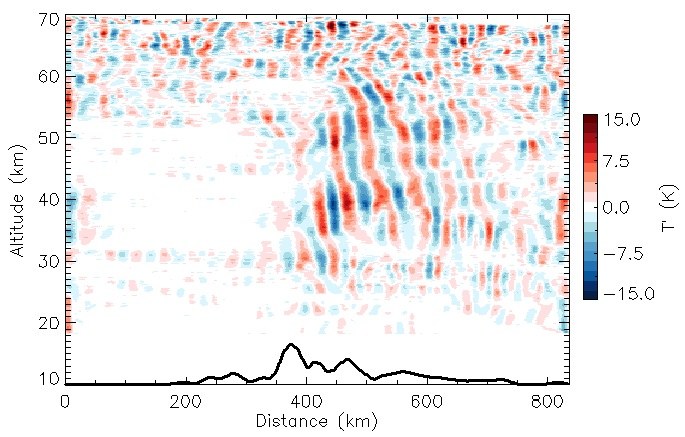ALIMA
ALIMA is a powerful iron-resonance and Rayleigh lidar system for airborne measurements in the middle atmosphere, including the stratosphere, mesosphere and lower thermosphere. The instrument probes the iron line at 372 nanometres wavelength to determine atmospheric temperature, wind and iron density within the iron layer, which extends from approximately 70 to 120 kilometres in altitude depending on geographic location and time of the year. The high temporal resolution of 2 minutes allows the detection of short period atmospheric gravity waves. This is important because high frequency waves contribute the largest share to the gravity wave-induced momentum flux. Below the iron layer, temperature is inferred from measurements of Rayleigh scattering. The combination of both lidar techniques facilitates the investigation of gravity waves from about 15 kilometres to about 120 kilometres altitude.

The transmitter comprises two tunable pulsed lasers at 372 nanometres (iron lidar) and 532 nanometres wavelength (Rayleigh lidar). In order to enable precise spectroscopic measurements, the spectrum of each laser pulse is accurately measured and analyzed with sub-Megahertz precision. The laser pulses of both lasers are interleaved and transmitted into the atmosphere at 100 Hertz pulse repetition rate. A 50-centimetre diameter Cassegrain telescope onboard the aircraft collects backscattered light which is then transmitted to the receiver via optical fibers. Ultra-narrowband optical filters (etalons) inserted in the optical path in front of the photon detectors suppress the broadband solar background and thus allow for lidar observations in full daylight. The data acquisition system processes the digitized photon count signals in real-time within the cycle time of 5 milliseconds. An active beam stabilization system analyzes and corrects the alignment of the laser beams after each laser pulse, maintaining a precise lock of the laser beams to the field of view of the telescope even during aircraft maneuvers and occurrence of turbulence.
ALIMA was first used during the SouthTRAC campaign which took place above South America and Antarctica in autumn 2019. In 2026, ALIMA will then be used as part of the WAVEGUIDE campaign to investigate atmospheric gravity waves.


